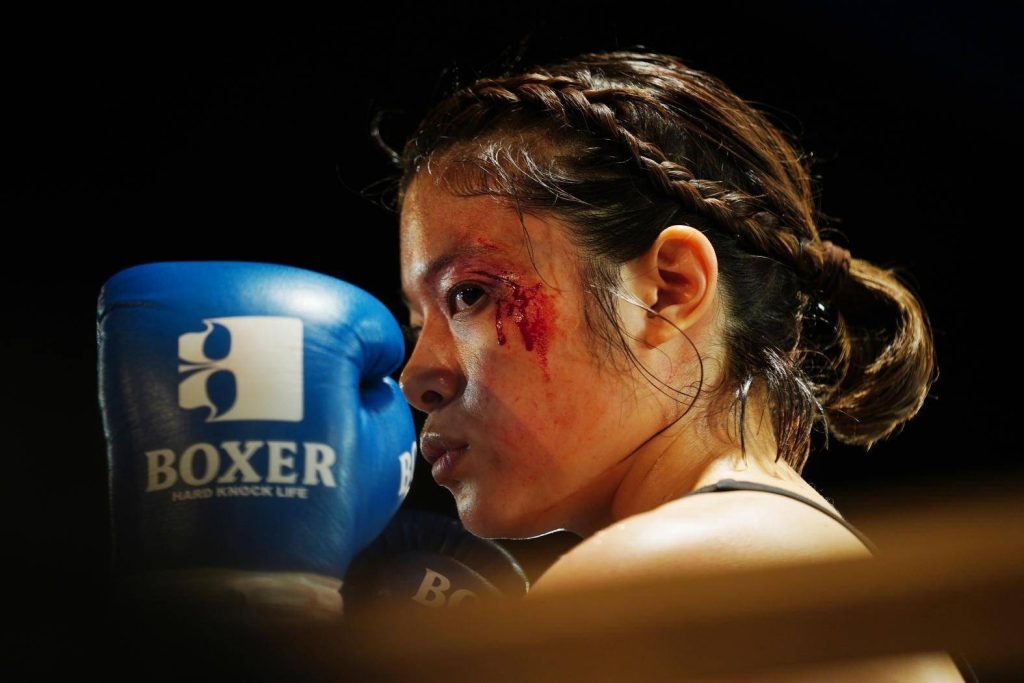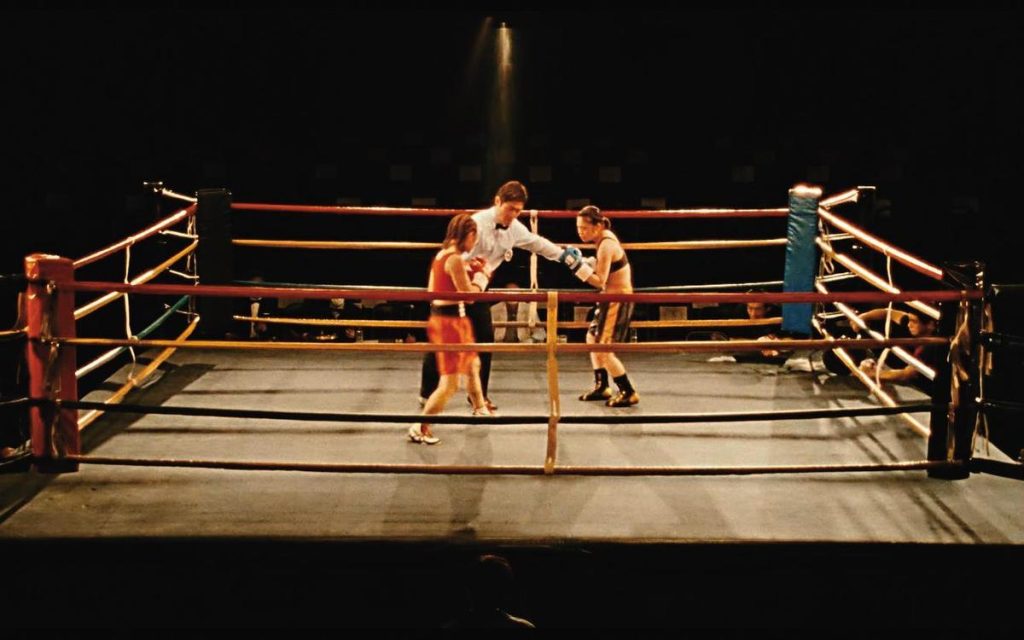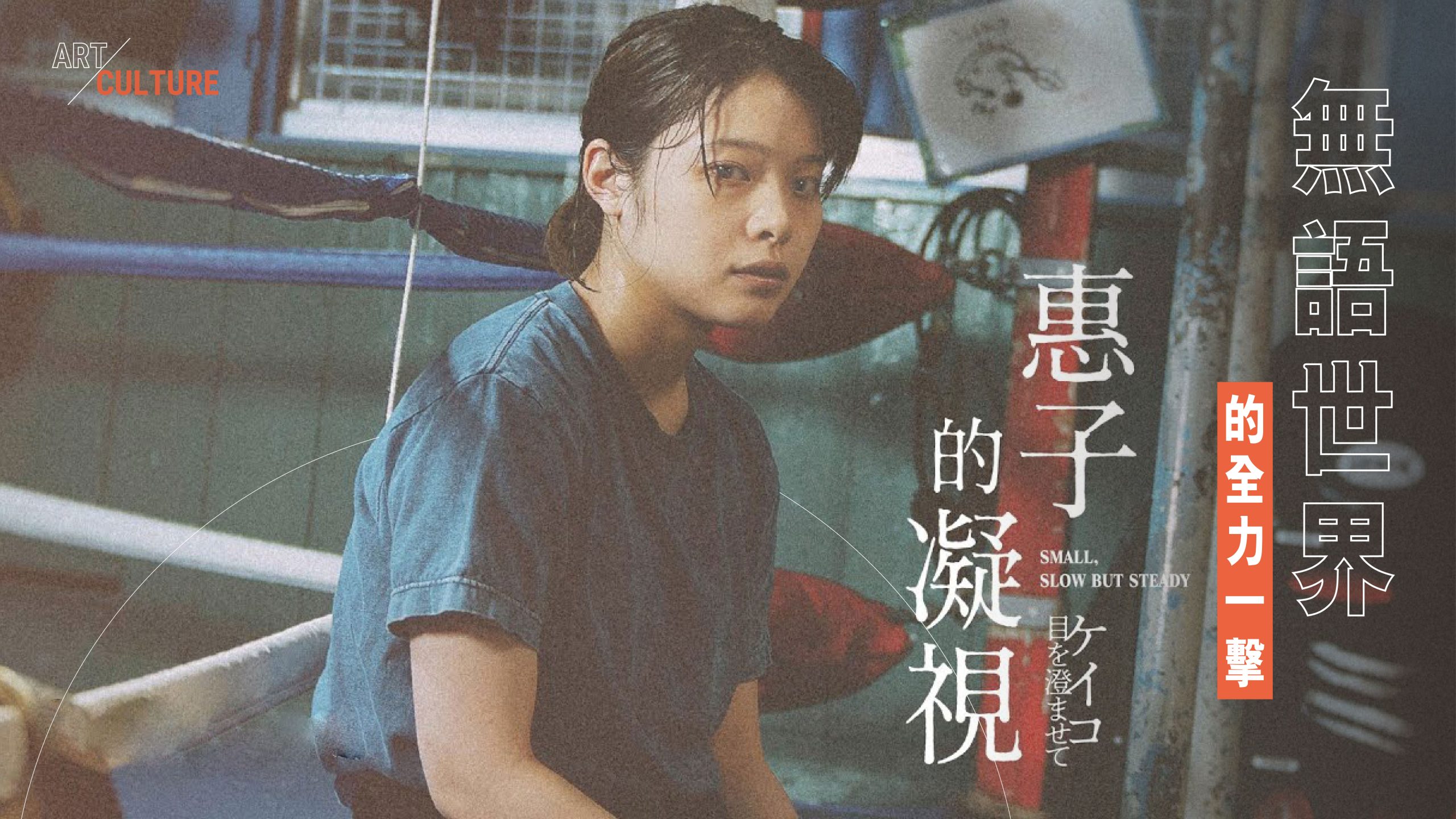
“Isn’t it (being deaf) a major disadvantage in boxing?”
“Keiko has excellent eyesight. While she might not be extraordinarily gifted,
I must admit, she possesses remarkable courage.”
Premiering at the end of July, Small, Slow but Steady is an adaptation of the life of a deaf Japanese professional female boxer Keiko Ogasawara. The film delves into how boxing transformed her once tumultuous life. Despite her small stature, slow punch speed, and inherent physical limitations, Keiko (portrayed by Yukino Kishii), a determined deaf female boxer, hones her willpower through her unyielding gaze. With her unique rhythm, she throws every punch in the journey of her life.
It’s important to approach Small, Slow but Steady without preconceived notions of a typical sports or inspirational movie. For action enthusiasts, it’s advised to manage your expectations accordingly. Those familiar with the up-and-coming director and his cinematic portfolio will likely anticipate surprises beyond the surface. Director Sho Miyake initially hesitated to undertake a biographical boxing film, acknowledging the abundance of well-crafted works in the genre. If he were to take on the project, he was determined to craft something distinctive.
Consequently, he embraced 16mm film, discarded traditional storyboarding and camera techniques, and opted for a deliberate and contemplative approach, akin to a prolonged “gaze”, achieved through extended takes. He reimagined the screenplay into a “Miyake-style” narrative, anchored by the character of Keiko, moving away from a straightforward autobiography. The film skillfully and evocatively captures the life of a girl navigating a silent world.
Are you prepared to engage in a 100-minute journey of “gazing” into the world of this mute girl?
I can’t hear and you can’t see

Keiko Ogasawara, Japan’s trailblazing deaf female professional boxer, emerged from a challenging youth marred by bullying and rebellion due to her hearing impairment. Her transformative journey began when she delved into the world of boxing and crossed paths with her mentor, Sasaki Tatsuo. Sasaki, the guiding figure behind a boxing gym in Arakawa District, shares an extraordinary kinship with Keiko: a bond formed between a boxer who can’t hear and a coach who can’t see. Their unspoken connection, where every punch signifies resilience, bridges the gap between silence and strength, transcending verbal communication.

“On December 25th, I was at the gym practising mitt work with the head coach.
My eyes were wide open, and they became dry enough to swell up with tears.”
Keiko Ogasawara watched the film three or four times before its release, and during each viewing, tears flowed incessantly.
“Keiko” and “Itchiko”
You may inevitably recall Sakura Ando’s 100 Yen Love (2014), where she gained weight to portray a scruffy and clumsy female lead, earning Sakura Ando the Best Actress award at the Japan Academy Awards. In Small, Slow but Steady, Yukino Kishii portrays her role in a “silent” manner and also secures the accolade of a Best Actress at the Japan Academy Awards. Both films revolve around female boxers, share the guidance of boxing coach and actor Shinichiro Matsuura, and depict their respective heroines rising from downtrodden lives through boxing.
However, the atmosphere and pacing of the two films are entirely distinct. Watching 100 Yen Love feels like being ringside, cheering Ichiko on, while observing Small, Slow but Steady is akin to reading Keiko’s diary, tranquil and unadorned. The robust “Ichiko” and the slender “Keiko” seem to vividly capture the two sides of boxing.

Embracing Pain
Keiko’s journey is an exploration of pain rather than an evasion of it. For a boxer, fear of pain might seem paradoxical, yet Keiko recognizes pain as an integral part of her path. Her willingness to confront and transform pain sets her apart. She employs this fear as a catalyst for her punches, morphing vulnerability into strength. This raw authenticity deeply resonates, forming the core of what director Mitsuyoshi Maeda finds most captivating. Keiko’s ability to acknowledge her own humanity, her courage to admit her fears, exhibits a genuine and remarkable strength.
Navigating the Abyss
The film delves into Keiko’s inner turmoil and quest for identity as she evolves into a professional boxer. The narrative captures the post-match struggles and the ensuing uncertainty. With the gym’s pandemic-induced closure and fellow members departing, Keiko stands at a crossroads. The film captures her everyday life, spotlighting ordinary yet pivotal moments that influence her decisions. Keiko’s journey becomes a metaphor for anyone grappling with life’s unpredictability. The uncertainty, the voyage through uncharted waters—these are universal experiences that resonate beyond the confines of the boxing ring.
Embracing Loss
Differing from conventional sports film narratives, Small, Slow but Steady dares to portray Keiko’s loss in a pivotal match. This unfiltered depiction challenges the notion that triumph is the sole outcome worth showcasing. Keiko’s defeat transforms into a symbol of resilience and the embrace of setbacks.
The significance of the title deepens as Keiko’s story unfolds; it serves as a reminder that growth doesn’t solely stem from victory but from the willingness to embrace both success and failure. It encapsulates the essence of Keiko’s journey, celebrating her unwavering determination and spirit.
“In a silent world, I strike with unwavering resolve, each punch a testament to my determination.”
Small, Slow but Steady (2022)
Photo Source: Light Year Images

